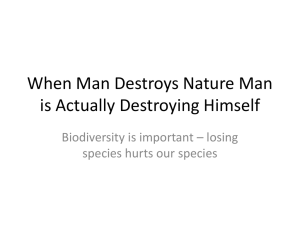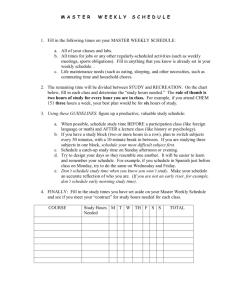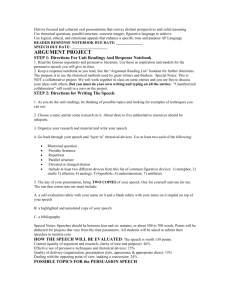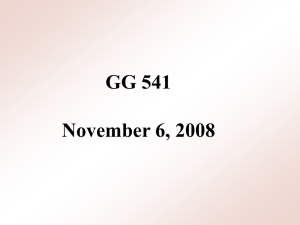Syllabus
advertisement
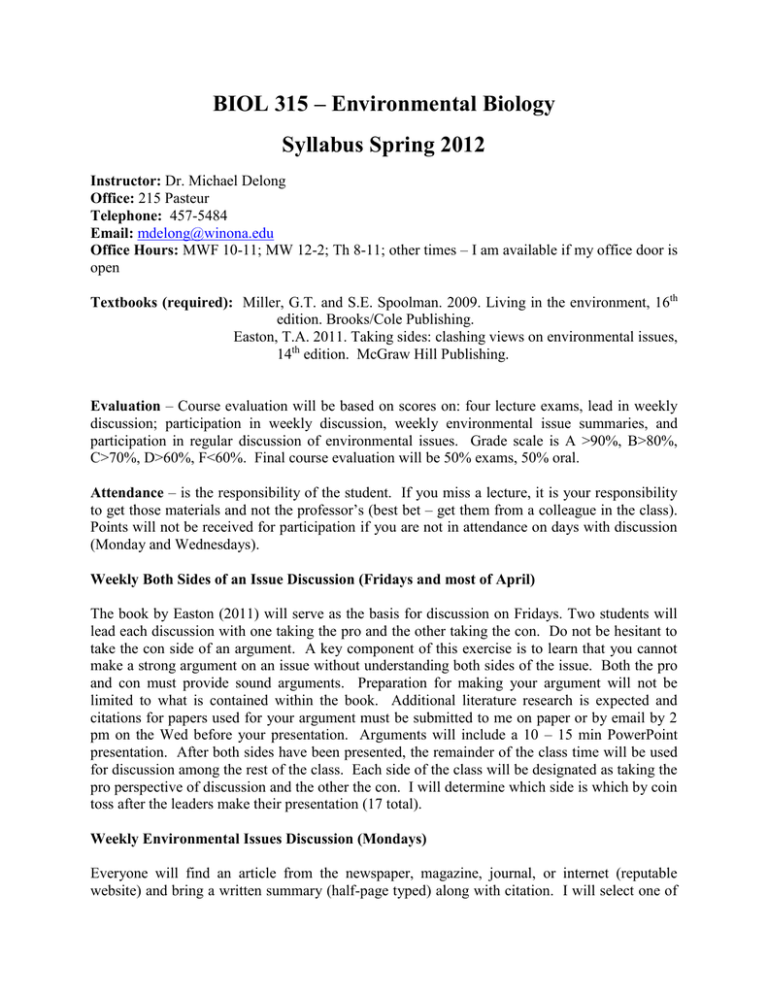
BIOL 315 – Environmental Biology Syllabus Spring 2012 Instructor: Dr. Michael Delong Office: 215 Pasteur Telephone: 457-5484 Email: mdelong@winona.edu Office Hours: MWF 10-11; MW 12-2; Th 8-11; other times – I am available if my office door is open Textbooks (required): Miller, G.T. and S.E. Spoolman. 2009. Living in the environment, 16th edition. Brooks/Cole Publishing. Easton, T.A. 2011. Taking sides: clashing views on environmental issues, 14th edition. McGraw Hill Publishing. Evaluation – Course evaluation will be based on scores on: four lecture exams, lead in weekly discussion; participation in weekly discussion, weekly environmental issue summaries, and participation in regular discussion of environmental issues. Grade scale is A >90%, B>80%, C>70%, D>60%, F<60%. Final course evaluation will be 50% exams, 50% oral. Attendance – is the responsibility of the student. If you miss a lecture, it is your responsibility to get those materials and not the professor’s (best bet – get them from a colleague in the class). Points will not be received for participation if you are not in attendance on days with discussion (Monday and Wednesdays). Weekly Both Sides of an Issue Discussion (Fridays and most of April) The book by Easton (2011) will serve as the basis for discussion on Fridays. Two students will lead each discussion with one taking the pro and the other taking the con. Do not be hesitant to take the con side of an argument. A key component of this exercise is to learn that you cannot make a strong argument on an issue without understanding both sides of the issue. Both the pro and con must provide sound arguments. Preparation for making your argument will not be limited to what is contained within the book. Additional literature research is expected and citations for papers used for your argument must be submitted to me on paper or by email by 2 pm on the Wed before your presentation. Arguments will include a 10 – 15 min PowerPoint presentation. After both sides have been presented, the remainder of the class time will be used for discussion among the rest of the class. Each side of the class will be designated as taking the pro perspective of discussion and the other the con. I will determine which side is which by coin toss after the leaders make their presentation (17 total). Weekly Environmental Issues Discussion (Mondays) Everyone will find an article from the newspaper, magazine, journal, or internet (reputable website) and bring a written summary (half-page typed) along with citation. I will select one of the summaries and we will spend part of the lecture time discussing what happened, potential impacts, and potential for remediation (11 total). What you should consider, but not limited to this, in the written summary is: 1) nature/cause of the issue; and 2)nature of the impact. They do not have to be recent events (e.g., a spill or contamination) but can also pertain to new information on long-standing environmental issues. Lecture Schedule Lecture Readings Most of the initial lectures will be review of general ecology Introduction Chapter 1 Matter, Energy, & Systems Chapter 2 Ecosystems Chapter 3 Biodiversity and Evolution Chapter 4 Species Interactions and Controls Chapter 5 Impact of Human Population Chapter 6 Exam - 1 February Climate and Terrestrial Biodiversity Aquatic Biodiversity Sustaining Biodiversity Food, Soil, and Pest Management Chapter 7 Chapter 8 Chapters 9-11 Chapter 12 Exam - 7 March Water Resources Geology and Nonrenewable Minerals Nonrenewable Energy Renewable Energy and Efficiency Chapter 13 Chapter 14 Chapter 15 Chapter 16 Exam - 4 April Air Pollution Climate Change Water Pollution Solid and Hazardous Waste Sustaining Human Societies Exam - May 8 – 10 am Chapter 18 Chapter 19 Chapter 20 Chapter 21 Chapters 23-25


